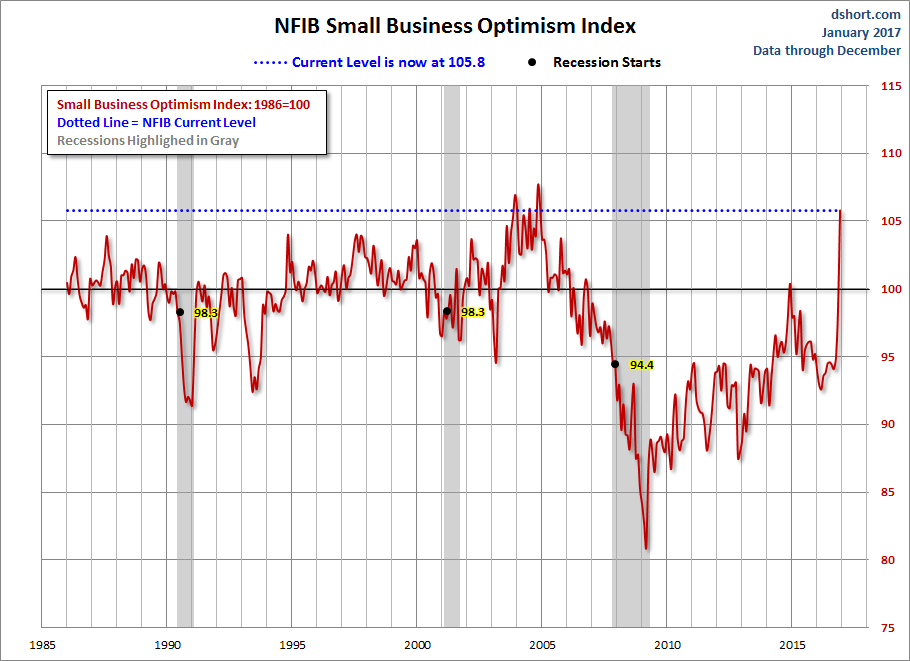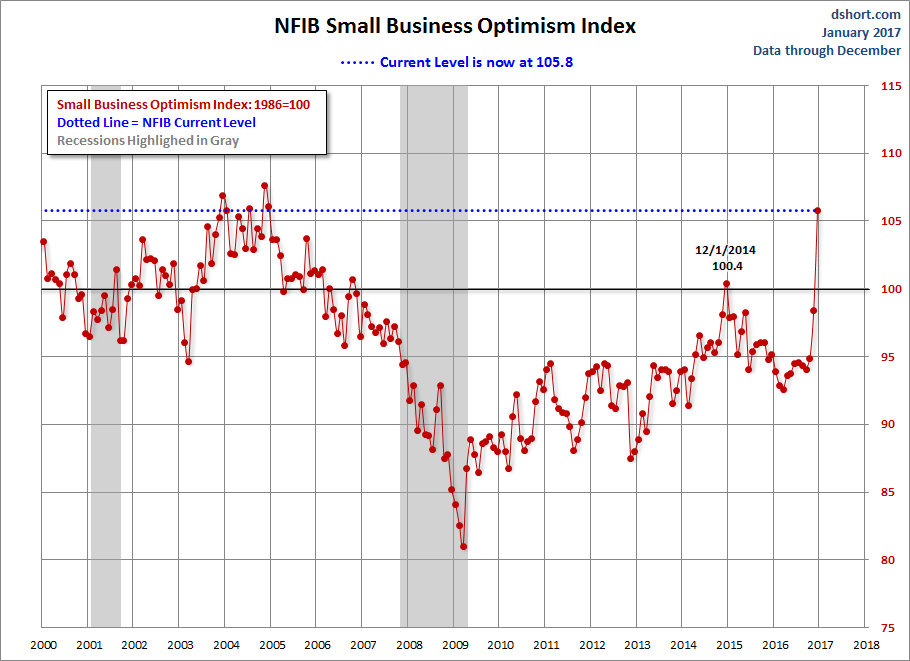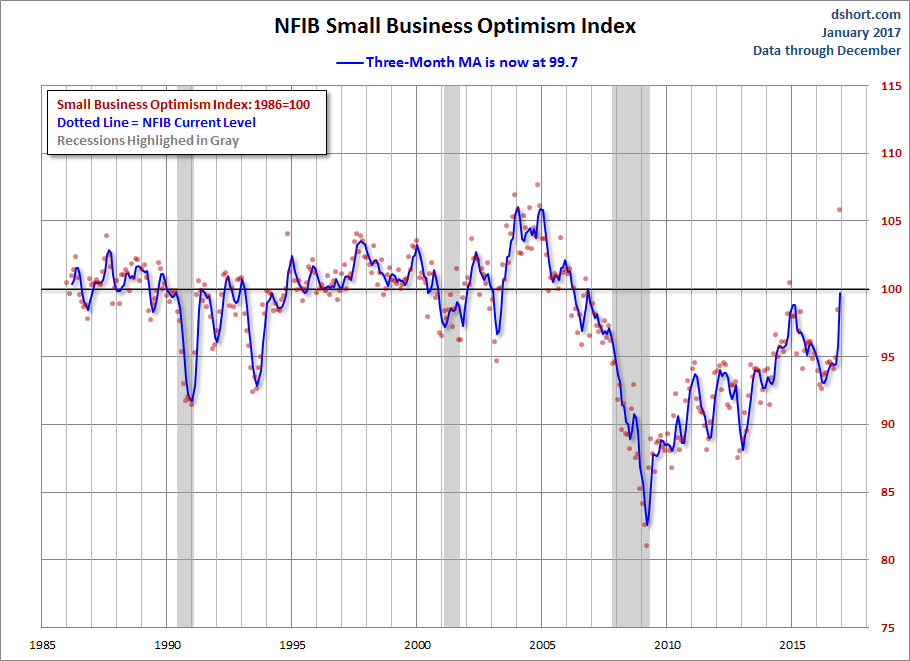The latest issue of the NFIB Small Business Economic Trends came out this morning. The headline number for November came in at 105.8, up 7.4 from the previous month's 98.4, and its highest since December 2004. The index is at the 98th percentile in this series. Today's number came in well above the Investing.com forecast of 98.4.
Here is an excerpt from the opening summary of the news release.
Small business optimism rocketed to its highest level since 2004, with a stratospheric 38-point jump in the number of owners who expect better business conditions, according to the monthly National Federation of Independent Business (NFIB) Index of Small Business Optimism, released today.
“We haven’t seen numbers like this in a long time,” said NFIB President and CEO Juanita Duggan. “Small business is ready for a breakout, and that can only mean very good things for the U.S. economy.”
The Index reached 105.8, an increase of 7.4 points. Leading the charge was “Expect Better Business Conditions,” which shot up from a net 12 percent in November to a net 50 percent last month.
The first chart below highlights the 1986 baseline level of 100 and includes some labels to help us visualize that dramatic change in small-business sentiment that accompanied the Great Financial Crisis. Compare, for example, the relative resilience of the index during the 2000-2003 collapse of the Tech Bubble with the far weaker readings following the Great Recession that ended in June 2009.

Here is a closer look at the indicator since the turn of the century. We are now at a post-recession interim high with 105.8.

The average monthly change in this indicator is 1.3 points. To smooth out the noise of volatility, here is a 3-month moving average of the Optimism Index along with the monthly values, shown as dots.

Here are some excerpts from the report.
Labor Markets
Fifty-one percent reported hiring or trying to hire (down 7 points), but 44 percent reported few or no qualified applicants for the positions they were trying to fill. Twelve percent of owners cited the difficulty of finding qualifed workers as their Single Most Important Business Problem (down 4 points).
Inflation
How effective has the Fed's monetary policy been in lifting inflation to it two percent target rate?
The net percent of owners raising average selling prices was a net 6 percent (up 1 point). The net percent raising prices has been virtually 0 all year, but November and December presented opportunities for owners to raise prices a bit. Eleven percent of owners reported reducing their average selling prices in the past three months (down 1 point), and 13 percent reported price increases (down 1 point).
Credit Markets
Has the Fed's zero interest rate policy and quantitative easing had a positive impact on Small Businesses?
Four percent of owners reported that all their borrowing needs were not satisfied, unchanged over the past few months. Twenty-nine percent reported all credit needs met (down 1 point), and 52 percent explicitly said they did not want a loan. However, including those who did not answer the question, presumably uninterested in borrowing, 67 percent of owners have no interest in borrowing. Record numbers of firms remain on the “credit sidelines”, seeing no good reason to borrow yet, in spite of the surge in optimism. As optimism is translated into spending plans, borrowing activity should pick up.
NFIB Commentary
This month's "Commentary" section includes the following observations:
In a wealthy economy with substantial discretion over the allocation of resources, expectations and sentiment can trigger substantial changes in “macroeconomic activity”. Some of our 300 million consumers can decide to spend a bit more if the future looks brighter. A larger number of our six million employer firms could decide to hire another worker to meet higher expected demand or expand their businesses to handle expected increases in sales. Just how much growth this can generate depends on the availability of unused capacity, in labor and production facilities and debt or capital funds. No doubt we can do better than 2 percent and, for short periods, 3 to 4 percent growth. Ultimately, job creation depends on economic growth, modified by the level of productivity.
What is required is a sensible set of policies that do not squander our scarce resources. Virtually every business owner can identify regulations that have little or no apparent value but have high compliance costs, using up scarce capital and valuable management time. Politicians say they want to create jobs but their regulations and laws passed only increase the cost of hiring a worker, and that is not good for job creation.
Business Optimism and Consumer Confidence
The next chart is an overlay of the Business Optimism Index and the Conference Board Consumer Confidence Index. The consumer measure is the more volatile of the two, so it is plotted on a separate axis to give a better comparison of the two series from the common baseline of 100.

These two measures of mood have been highly correlated since the early days of the Great Recession. The two diverged after their previous interim peaks, but have recently resumed their correlation. A decline in Small Business Sentiment was a long leading indicator for the last two recessions.
